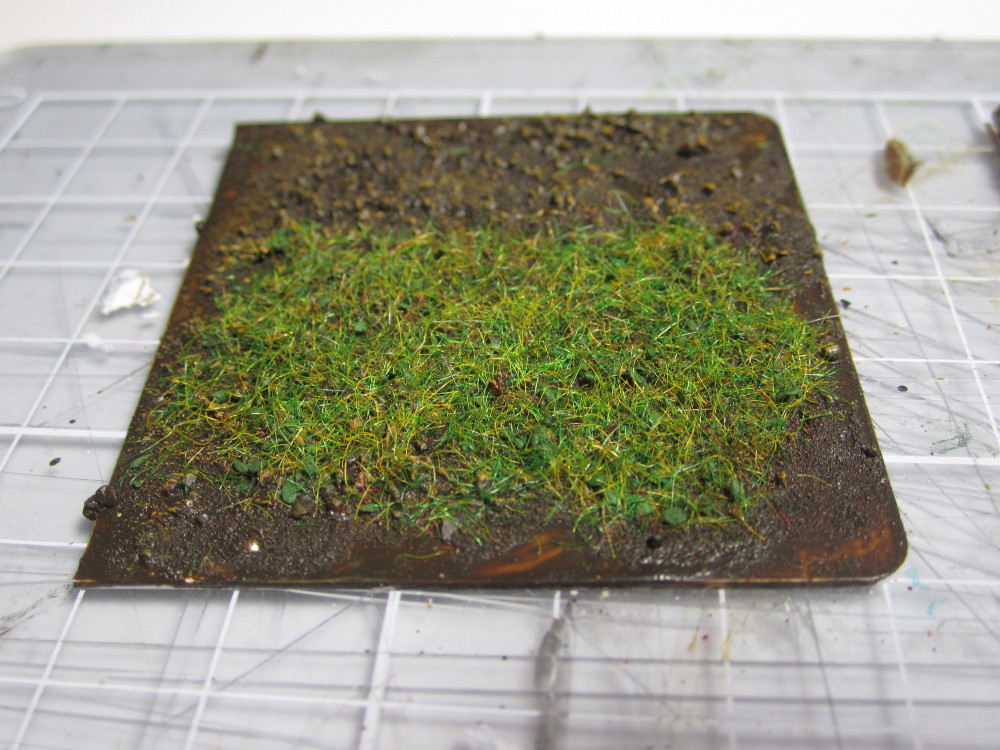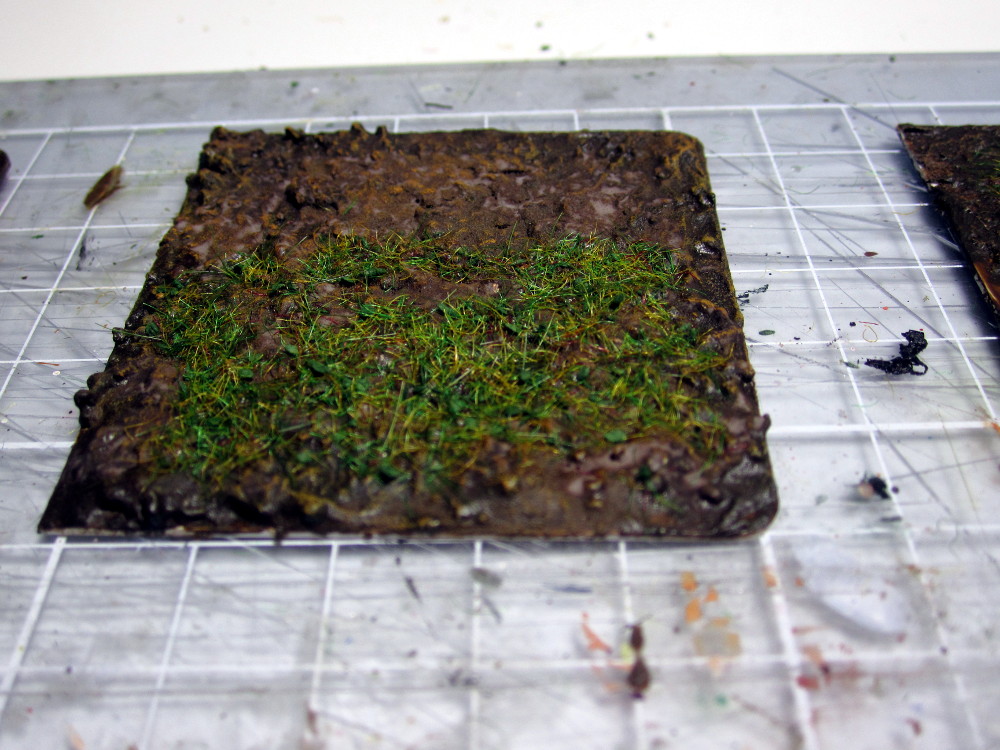There's also "powdered" papier-maché, which comes with dried water-soluble glue already in it. You just mix the powder with water to make a papier-maché paste. I've been experimenting with it myself, but haven't really struck upon a good use for it yet.
This. I'm actually using this thing called
plastiform. You mix it with water in a ziplock bag, knead it and let it set for 3 hours before using it. The excess can be saved in the ziplock bag.
And here are the finished samples. In the same order as last time, from upper left to lower right: 1. PVA + sand, 2. 'gloop' (Polyfilla + PVA + sand + acrylic paint), 3. Papier-maché (Plastiform), 4. Papier-maché (Plastiform) + sand, 5. Papier-maché (Plastiform) + sand + acrylic paint.

All samples except the last one were touched up or painted with raw umber acrylic paint. I skipped the basecoat on the last sample as I thought the pre-colored mix worked so well. The samples were then drybrushed, first with yellow ochre then with yellow ochre + white. The highlights on the last sample were a little lighter as the base color had a lighter tone. Finally the samples were given a dark brown wash with Vallejo Umber Shade to tie everything together. This final wash was maybe a bit too dark for the fifth sample.
Unfortunately I forgot to take pictures at this step as I then raced to sprinkle some static grass mix on the samples. Luckily some areas were left bare so the non-grassy bits should be visible too. Here you can see the results:

1. PVA + sand

2. 'gloop' (Polyfilla + PVA + sand + acrylic paint)

3. Papier-maché

4. Papier-maché + sand

5. Papier-maché + sand + acrylic paint
As you can see, the differences between the different ground textures are lessened when the static-grass is applied. Number 4 warped again after painting. When I tried pushing it back a bit, which had helped a bit previously, it cracked.
I'd like to try premixing the Papier-maché with dry pigment instead of acrylic paint next time. And the 'gloop' mixture could be experimented with a bit. Overall I'm happy with the look of both the 'gloop' and papier-maché. Although the ease of use the gloop will probably make it my method of choice for most cases.